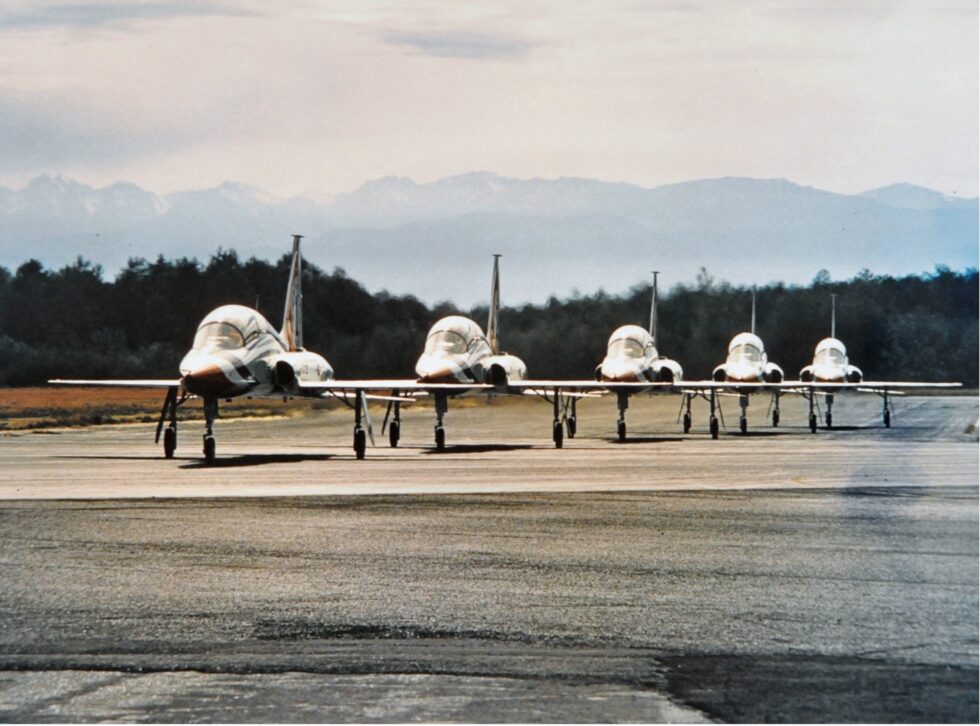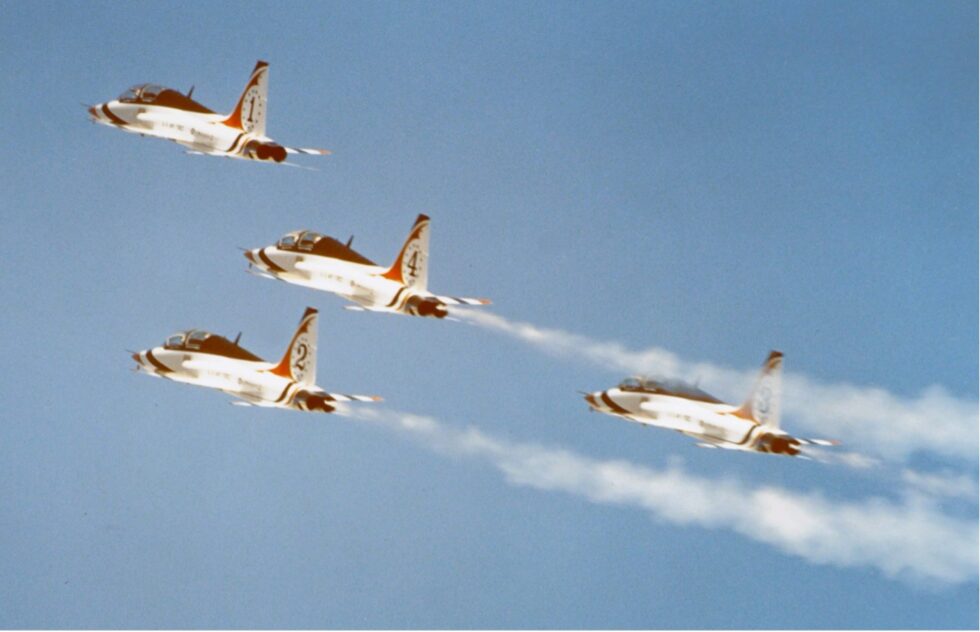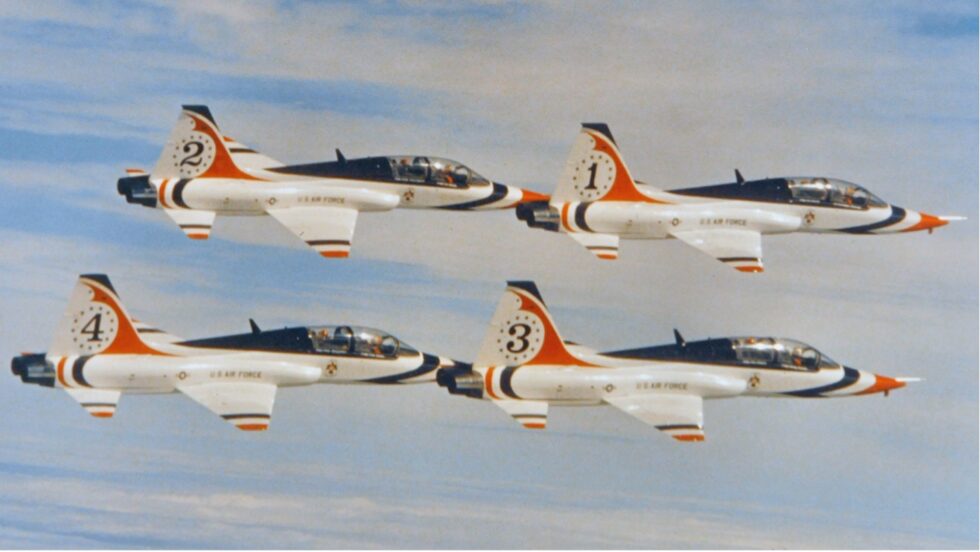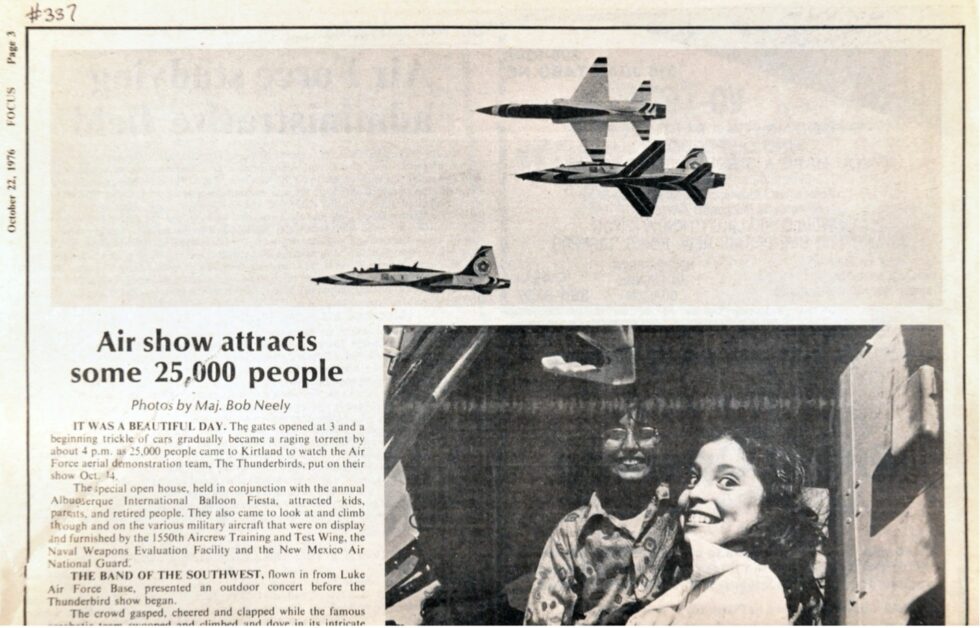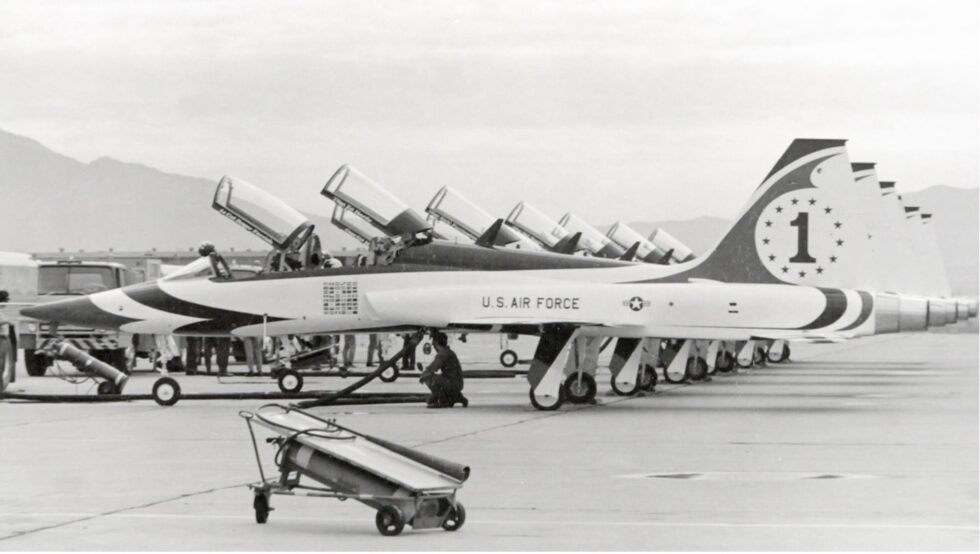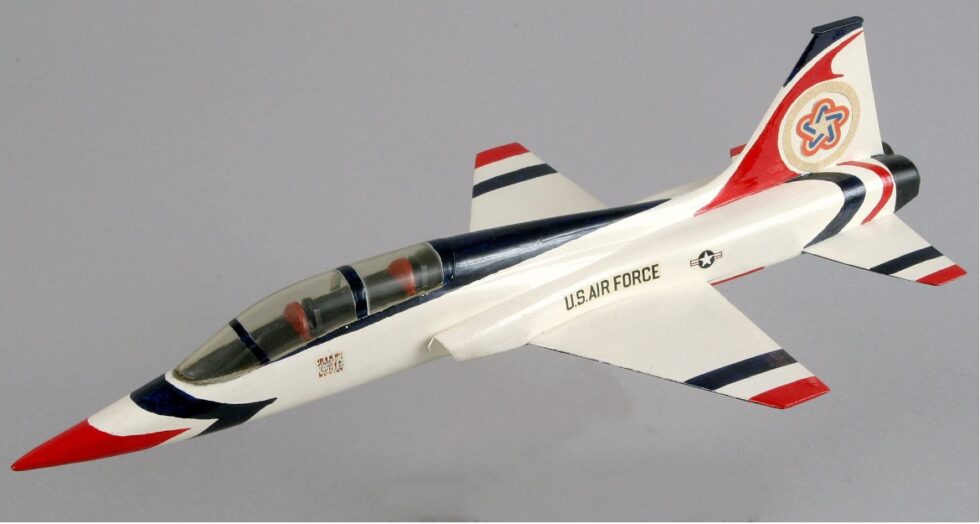USAF Thunderbirds Northrop T-38A Talon
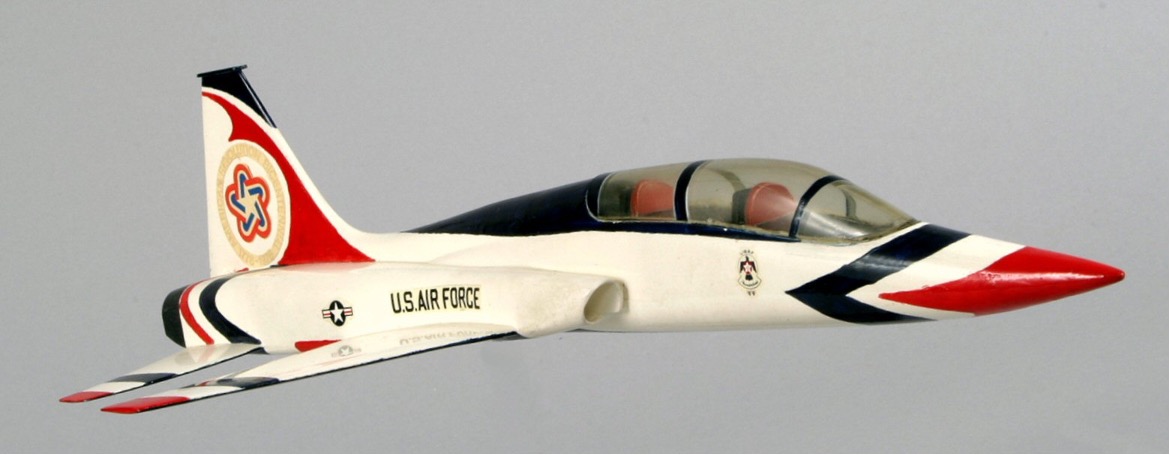
MODEL BY:
H. Davidson
Model Scale:
1/48
MODEL ADDED:
10/11/1976
historical significance
First Albuquerque Visit: 1974
Additional Information:
The Northrop T-38 Talon is a two-seat, twinjet supersonic jet trainer designed and produced by the Northrop Corporation. It was the world’s first supersonic trainer as well as the most produced. The Northrop T-38 Talon’s configuration includes a small, low-mounted, long-chord wing, a single vertical stabilizer, and a tricycle undercarriage. The cockpit accommodates a student pilot and instructor in a tandem seating arrangement.
The T-38 can be traced back to 1952 and Northrop’s N-102 Fang and N-156 fighter aircraft projects. During the mid-1950s, Northrop officials decided to adapt the N-156 to suit a recently issued general operating requirement by the United States Air Force (USAF) for a supersonic trainer to replace the Lockheed T-33. The Northrop bid was successful because of the lower lifecycle cost comparisons to competing aircraft and the company received an initial order to build three prototypes. The first of these, designated YT-38, made its maiden flight on April 10, 1959. The T-38 began USAF service on March17, 1961 complementing the Cessna T-37 Tweet primary jet trainer. When production ended in 1972, 1,187 T-38s had been built, plus two N-156T prototypes. The USAF is the largest operator of the T-38 and since its introduction an estimated 50,000 military pilots have trained on this aircraft. The majority of T-38s built were of the T-38A variant.
The USAF Air Demonstration Squadron (“Thunderbirds”) is the air demonstration squadron of the United States Air Force. The Thunderbirds are assigned to the 57th Wing based at Nellis Air Force Base, Nevada. Created in 1953, the Thunderbirds are the third-oldest formal flying aerobatic team using the same name in the world. Number one is the French Air Force Patrouille de France formed in 1931 followed by the United States Navy Blue Angels formed in 1946.
Because of the fuel crisis of the early 1970s, the USAF selected the Northrop T-38A Talon to replace the F-4 Phantom II. Five T-38s used the same amount of fuel needed for one Phantom and fewer people and equipment were required to maintain the aircraft. Although it met the criteria of demonstrating the capabilities of a prominent USAF aircraft, the Talon failed to fulfill the Thunderbird tradition of flying front-line jet fighters and the Thunderbirds only flew the Talon from 1974 to 1982.
On January 18, 1982, the Thunderbirds suffered a catastrophic loss during pre-season training. While practicing the four-plane diamond loop, the formation impacted the ground at high speed, instantly killing all four pilots: Major Norman L. Lowry (commander/leader), Captain Willie Mays, Captain Joseph N. “Pete” Peterson, and Captain Mark Melancon. The cause of the crash was determined by the USAF to be the result of a mechanical problem with the No. 1 aircraft’s control stick actuator. Visually cueing off the lead aircraft during formation maneuvering, the wing and slot pilots disregarded their positions relative to the ground.
The US Air Force precision flight team, the “Thunderbirds”, performed at an open house at Kirtland Air Force Base in Albuquerque New Mexico using the Northrop T-38A Talon on September 7, 1974.
GALLERY:
SEARCH OUR DATABASE:

